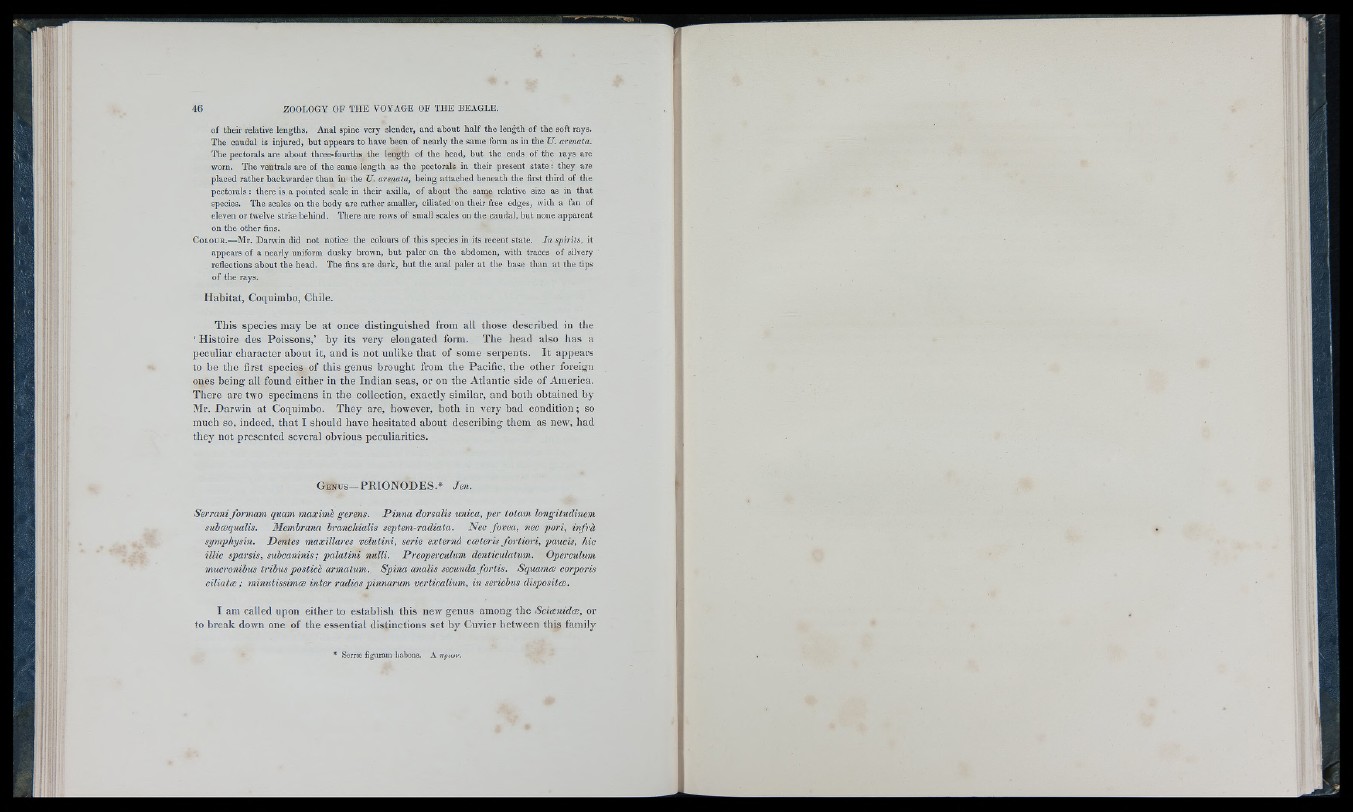
of their relative lengths. Anal spine very slender, and aboxit half the length of the soft rays.
The caudal is injured, but appears to have been o f nearly the same form as in the TJ. arenata.
The pectorals are about three-fourths the length of the head, but the ends of the rays are
worn. The ventrals are of the same length as the pectorals in their present state: they are
placed rather backwarder than in the U. arenata, being attached beneath the first third of the
pectorals : there is a pointed scale in their axilla, of about the same relative size as in that
species. The scales on the body are rather smaller, ciliated on their free edges, with a fan of
eleven or twelve striæ behind. There are rows of small scales on the caudal, but none apparent
on the other fins.
C o l o u r .— Mr. Darwin did not notice the colours o f this species in its recent state. In spirits, it
appears of a nearly uniform dusky brown, but paler on the abdomen, with traces of silvery
reflections about the head. The fins are dark, but the anal paler a t the base than at the tips
of the rays.
H abitat, Coquimbo, Chile.
This species may be at once distinguished from all those described in the
‘ Histoire des Poissons,’ by its very elongated form. The head also has a
peculiar character about it, and is not unlike that of some serpents. It appears
to be the first species of this genus brought from the Pacific, the other foreign
ones being all found either in the Indian seas, or on the Atlantic side of America.
There are two specimens in the collection, exactly similar, and both obtained by
Mr. Darwin at Coquimbo. They are, however, both in very bad condition; so
much so, indeed, that I should have hesitated about describing them as new% had
they not presented several obvious peculiarities.
G en u s-P R IO N O D E S .* Jen.
Serrani formam quam maxime gerens. Pinna dorsalis unica, per tolam longitudinem
subacqualis. Membrana hranchialis septem-radiata. Nec fovea, nee pori, infrà
symphysin. Pentes maxUlares velutini, serie externa cacteris fortiori, paucis, hie
illic sparsis, subcaninis; palatini milli. Preoperculum denticulatuni. Operculum
mucronibus tribus posticè armatum. Spina analis secunda forlis. Squamce corporis
ciliatcB ; minutissimi^ inter radios pinnarum verticalium, in seriebus disposilce.
I am called upon either to establish this new genus among the ScianidcB, or
to break down one of the essential distinctions set by Cuvier between tliis family
* Serræ figuram liabens. A irpixv.